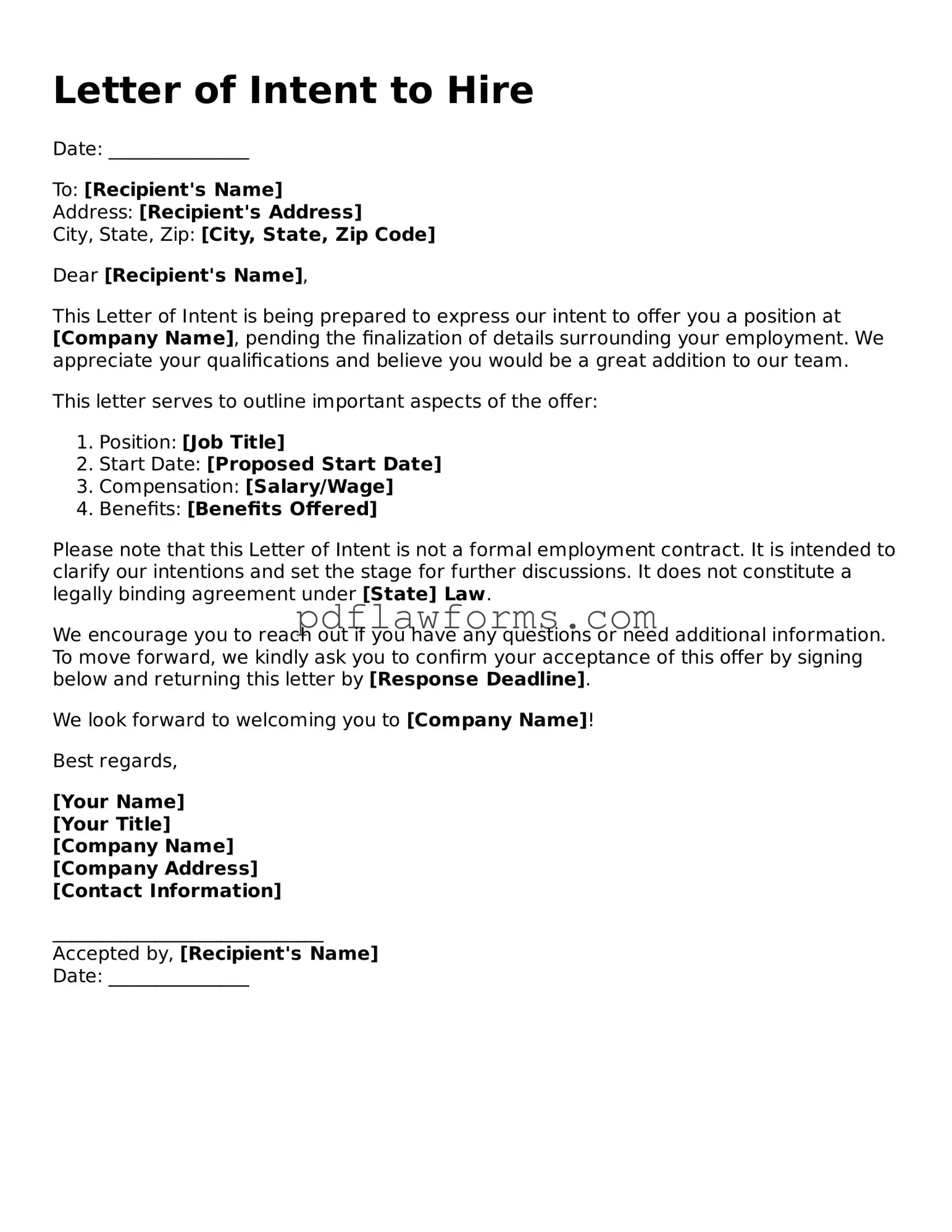Filling out a Letter of Intent to Hire form can be straightforward, but many people make common mistakes that can lead to delays or complications. One frequent error is leaving out essential information. Failing to provide details such as the position title or start date can create confusion for the hiring party. Ensure that all sections are complete before submitting.
Another mistake is using vague language. Clarity is key. Instead of saying "I am interested in the position," specify which position you are referring to. This helps the employer understand your intentions clearly and reduces the chances of miscommunication.
Many individuals also overlook the importance of proofreading. Spelling and grammatical errors can undermine the professionalism of your application. Take the time to review your form for any mistakes. A polished document reflects your attention to detail and seriousness about the opportunity.
Some people neglect to sign and date the form. A signature is often required to validate the document. Without it, your intent may not be recognized, causing unnecessary delays in the hiring process.
Another common oversight is failing to follow submission guidelines. Each employer may have specific instructions on how to submit the form, whether electronically or in print. Adhering to these guidelines is crucial for ensuring your application is considered.
Additionally, individuals sometimes forget to include their contact information. Providing a phone number and email address is essential for the employer to reach you for follow-up questions or interviews. Make sure this information is clearly stated.
Some applicants also make the mistake of not tailoring their intent to the specific company culture or job requirements. A generic letter can signal a lack of genuine interest. Take the time to research the company and reflect that understanding in your letter.
Finally, failing to express enthusiasm can be detrimental. Employers appreciate candidates who show genuine interest in the role. A lack of enthusiasm may lead them to question your commitment to the position.
By avoiding these common mistakes, you increase your chances of making a positive impression. Take the time to carefully complete the Letter of Intent to Hire form, and ensure that it reflects your best self.
